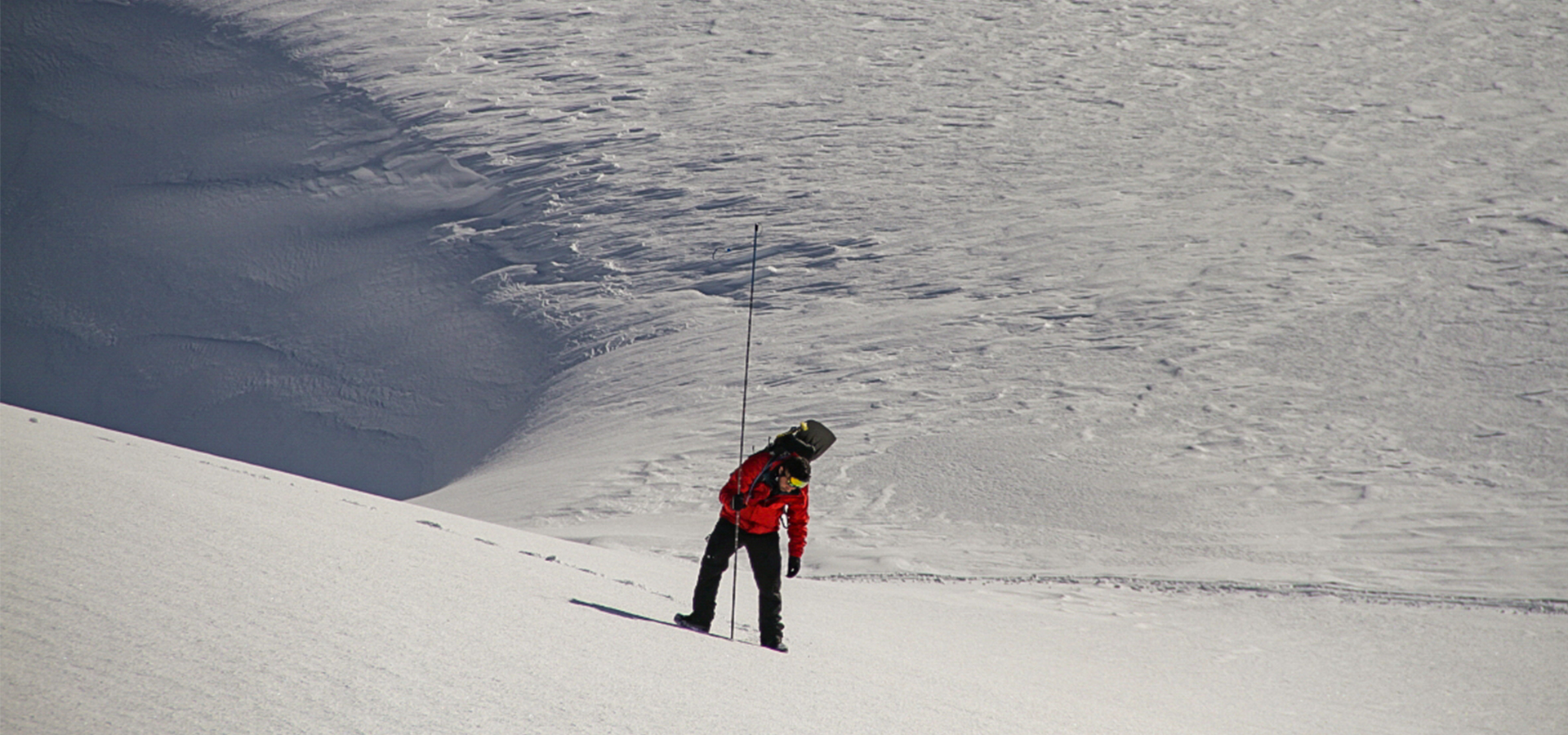
Become a citizen snow-scientist the next time you hike the Lebanese mountains!
- January 18, 2021
- 0
Cover Photo: Measuring snow height (HS), snow density, and SWE. Cedars (2870 m), 6 Mar 2016. Photo by Charbel Abou Chakra.
Hydrological importance of snow in Lebanon
For most Lebanese, the arrival of snow each year means they can escape their urban lives and head to the mountains that are reachable within an hour’s drive at the most. The snowpack in these mountains is a permanent destination for skiing, snowshoeing, snowmobiling, and for sharing adventures on social media. The same snowpack is a critical part of the national hydrological system and the sustainability of the water cycle in Lebanon.

The Mountains of Lebanon (Mount-Lebanon and Anti-Lebanon) are major water towers in the Levant. With average elevations above 2200 m, these mountain ranges play an important role in enhancing the winterly orographic precipitation. The hydrologic regime in the mountains is snow dominated and influenced by the Mediterranean climate and the karst groundwater system. While the climate controls the seasonal snowpack accumulation and melt processes, the karst system, which is characterized by a fast response, defines the fate of snowmelt and spring discharge. In fact, the mountain snowpack is crucial for the sustainability and the replenishment of the karst groundwater and spring water supply during the dry season. The meltwater released from the snowpack between February and May is a major source of fresh water for lowland coastal regions and inland plains. Snowmelt also contributes to the storage of surface water (e.g. mountains hill lakes, ponds, and wetlands) and the sustainability of the agricultural and ecological systems in the Mountains.
The network for snow observations in Lebanon (NSOL)
In Lebanon, knowing how much snow had fallen and how much water is contained in the snowpack at any given time, is crucial for making predictions about the water supply during the dry season. To collect this type of information, a network for snow observations (NSOL) was established in 2011 as a joint collaboration between the “Institut de Recherche pour le Développement” (IRD, France), the “Centre d’Etudes Spatiales de la Biosphere” (CESBIO, France), the University of Saint Joseph (USJ, Lebanon), and the National Council for Scientific Research (CNRS, Lebanon). Part of what scientists do at the NSOL is measuring snowfall, snow depth, and snow water equivalent (SWE), as well as other standard meteorological variables on a regular basis. Most of the activities are located in Mount-Lebanon with three automatic weather stations collecting data since 2011 at elevations between 1830 and 2830 m.

Snow distribution is highly variable in space and time making the collection of data at larger scales costly and time expensive, and now scientists are looking for the help of the citizen scientists. The idea of crowdsourcing data from citizen scientists, though not new, had proven to be good for advancing science, in addition to being fun for most of the mountain-enthusiasts. There is also evidence that citizen science democratizes access to information and enhances the public understanding of science. Public access to scientific data is a fundamental component of the NSOL framework.
Next time you hit the slopes
The next time you go out for a winter hike try to collect snow-depth data while you are taking photographs of the snow scenery. How to do that? Well, measuring snow depth is simple and all you need: (1) a Snow Probe with graduated markings in centimeters and (2) your smartphone with the Mountain Hub App installed. The Community Snow Observations http://communitysnowobs.org/ provides a step-by-step tutorial on how to measure snow depth.
Prepared by: Abbas Fayad, PhD, has research interests in cold region processes and the hydrology of mountains. He is currently a postdoctoral research fellow at the Centre for Hydrology, University of Saskatchewan, Canada. Based at the Coldwater Lab in Canmore, the Canadian Rockies, he studies mountain snowpack and glaciers (tweets @enviwatch).











